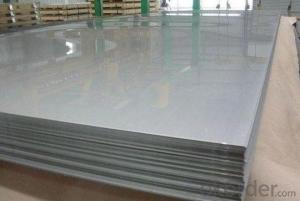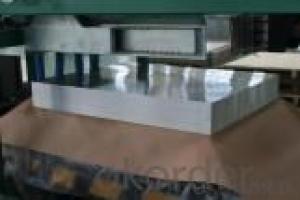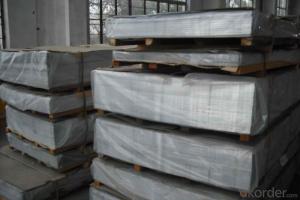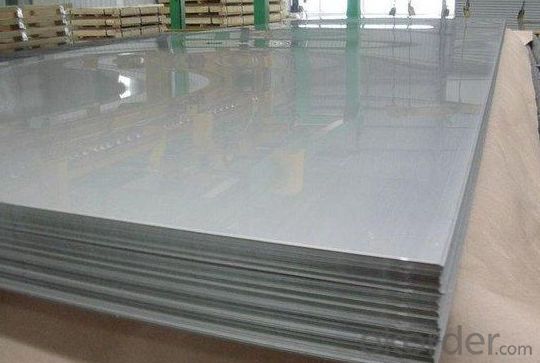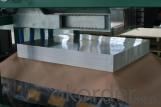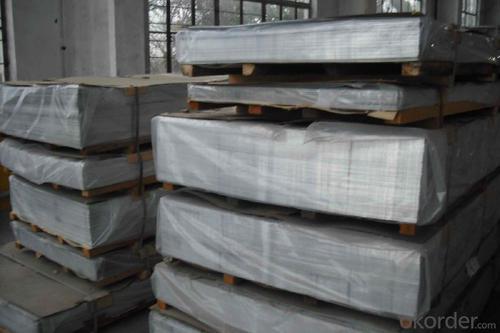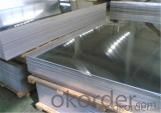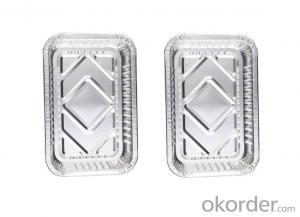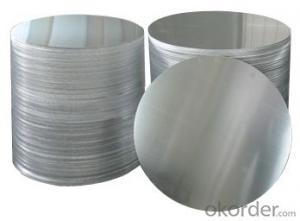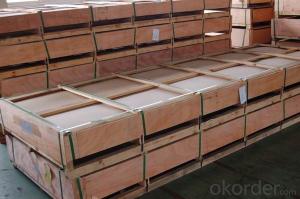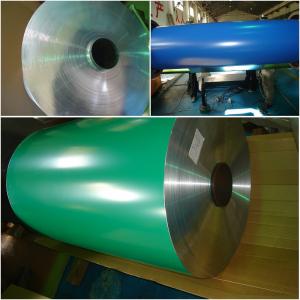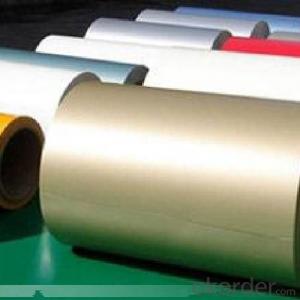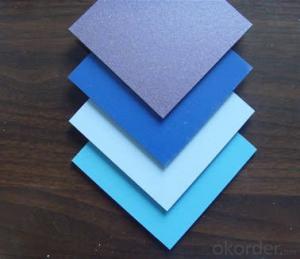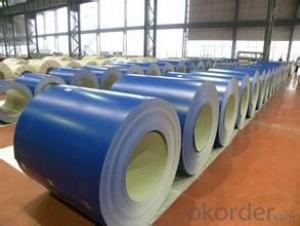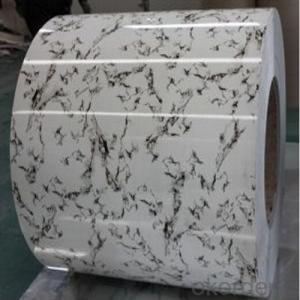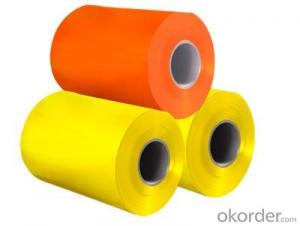Brushed Aluminum Adhesive Sheets Prepainted Aluminum Coil Aluminum Sheet PPGL
- Loading Port:
- Shanghai
- Payment Terms:
- TT or LC
- Min Order Qty:
- 1 m.t.
- Supply Capability:
- 2000 m.t./month
OKorder Service Pledge
OKorder Financial Service
You Might Also Like
Specification
Structure of Prepainted Aluminium Coil PPGL Description:
Coated aluminum coil/sheet are of a wide range of colors, which gives wonderful appearance no matter in residential and commercial constructions of great exhibition centers.
Main Features of Aluminium Coil PPGL:
Application : Mainly used insigns, billboards, building exterior decoration, bus body, high-rise buildings and factories wall decoration, kitchen sink, lamp, fan leaves, with pieces of electronic, chemical equipment, sheet metal processing parts, deep drawing or spinning hollowware, welding parts, heat exchangers, bell surface and disk, plate, kitchenware, decorations, reflective devices, ect
Images of Aluminium Coil PPGL:
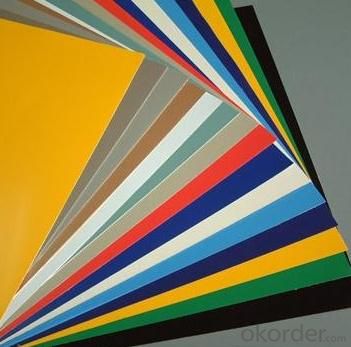
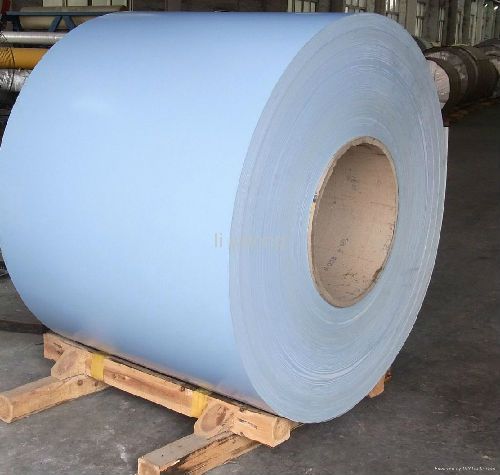
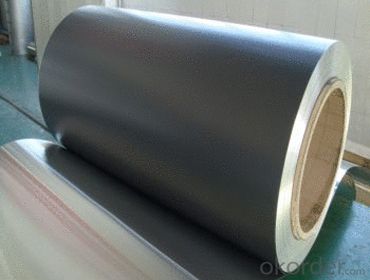
Aluminium Coil PPGL Specification:
Product Name | Aluminum Coil |
Alloy | A1100,A3003,A1050,A8011,A3105,A5005 etc |
Thickness | 0.022mm to 3.0 mm |
Width | Standard width:1240mm; 1200mm |
All width: 30mm - 1600mm | |
Diameter | out dia:1200mm |
Interior dia: 405mm,505mm | |
Weight | 2.5 T/coil,3.0 T/coil |
Coating | PE,PVDF,ACRYLIC |
Surface | Embossed, mill finish, coated; aluminum gutter coil |
Color | AS to all RAL color |
Gloss | 10-90%(EN ISO-2813:1994) |
Coating Thickness | PE: more than 18 micron |
PVDF: more than 25 micron | |
Coating Hardness (pencil resistance) | More than 2h |
Coating adhesion | 5J(EN ISO-2409:1994) |
Impact Resistance | No peeling or cracking(50 kg/cm,ASTMD-2794:1993) |
Flexibility (T-bend) | 2T |
MEK resistance | More than 100 |
Specifications:
Hardness(HV) , Tensile Strength(N/mm2,MPa) , Elongation(%) ,
Proof Stress , Surface Finish ,
Edge Condition(Slited Edge, Rolled Edge, De-burred Edge, etc.) ,
Camber(mm/1M) , Cross bow(mm/Width) , Coil set(mm/1M) ,Surface Roughness(Rmax, Rz, Ra)
Maximum OD , Coil Weight , Packing
FAQ of Aluminium Coil PPGL:
1.Superior quality of raw material.
2.Reasonable and stable chemical composition.
3.Accurate tolerance.
4.Goode mechanical property.
5.We have the certificate of ISO9001.
- Q: Can aluminum sheet be used for insulation?
- Although aluminum sheet can be utilized for insulation purposes, it is not as efficient as alternative insulation materials like fiberglass or foam. This is due to its low thermal conductivity, which implies that it is not a proficient heat conductor. Nevertheless, aluminum lacks adequate insulating properties on its own since it does not offer substantial resistance to heat flow. To enhance its effectiveness for insulation, aluminum sheet is frequently combined with other insulating materials. For instance, aluminum foil is commonly employed as a radiant barrier in buildings to reflect heat and diminish the amount of heat transferred through walls and roofs. In summary, while aluminum sheet can contribute to insulation, it is typically employed in conjunction with other materials to provide superior thermal insulation.
- Q: This question asks for a comparison of the pros and cons of using aluminum sheets as a material for exterior walls in construction.
- <p>Aluminum sheets for exterior walls offer several advantages, including durability, low maintenance, and resistance to corrosion and weathering. They are lightweight, which can reduce the load on structures, and are recyclable, contributing to sustainability. Additionally, aluminum sheets can be easily shaped and painted, offering design flexibility. However, they have some disadvantages, such as being a poor insulator, which may require additional insulation for energy efficiency. They can also dent or scratch easily and may require more frequent replacement due to their lower resistance to impacts compared to materials like stone or brick. Furthermore, while they reflect heat well, they can also conduct cold, potentially leading to issues in extreme temperature conditions.</p>
- Q: How is an aluminum sheet manufactured?
- An aluminum sheet is manufactured through a process called rolling. The first step involves heating a large aluminum ingot to a specific temperature in a furnace. Once the ingot reaches the desired temperature, it is transferred to a rolling mill. In the rolling mill, the heated aluminum ingot is passed between a series of rolling stands. These stands consist of two steel rollers that exert pressure on the aluminum, gradually reducing its thickness. As the ingot passes through each stand, the distance between the rollers is adjusted to achieve the desired thickness. Throughout the rolling process, the aluminum sheet is continuously cooled with water to prevent it from overheating. This also helps to increase its strength and hardness. The cooling process may vary depending on the specific alloy and properties required for the sheet. After the desired thickness is achieved, the aluminum sheet is further processed to enhance its surface finish. This includes processes like annealing, where the sheet is heated and then slowly cooled to relieve any internal stresses and improve its workability. Finally, the aluminum sheet is cut into desired sizes and shapes using shearing or sawing techniques. It can also undergo additional treatments such as coating, painting, or polishing depending on its intended application. Overall, the manufacturing of an aluminum sheet involves heating the ingot, rolling it between sets of steel rollers to reduce its thickness, cooling it, and then further processing to achieve the desired surface finish and size. This process ensures the production of high-quality aluminum sheets that can be used in various industries such as construction, automotive, aerospace, and more.
- Q: The radius of an atom of aluminum is 143pm and there are 10^12 in a meter. The aluminum is a 3x3cm square. The density is 2.70 g/cm^3. I found the mass to be 0.03g. I found the volume to be 0.09cm^3
- Good quality standard aluminum foil such as Reynolds brand is 0.007 inches thick. If aluminum atoms are indeed 143 picometers in radius then the foil would be 2,486,713 atoms thick. Of course, the thickness is not controlled to a tolerance of one atom. (Cheaper brands are about 0.0060 to 0.0065 inches thick.) The ionic radius of aluminum is commonly accepted to be 72 pm, and as of 2008 a covalent radius of 121 pm. . .
- Q: How do aluminum sheets perform in extreme weather conditions?
- Aluminum sheets perform well in extreme weather conditions due to their high resistance to corrosion and ability to withstand harsh elements such as strong winds, heavy rains, and extreme temperatures.
- Q: I would like to make a boat, Songhua River used to know, tell the answer, good + points!
- Marine yacht with 5083, with 5456 of inland water on it, domestic Park boat 5052 will be used
- Q: is putting Aluminium foil behind the wind shield actually generate more heat and make the car hotter inside or make the car inside cooler? assume you put foil behind all windows.
- Aluminum foil will absorb heat, just like any other metal (and anything for that matter, but this isn't a discussion about conductors vs. insulators). Whether aluminum foil absorbs heat is the essential issue here. A car gets hot in the sun as a result of the sunlight shining on the car. When the sun shines on a car, the light passes through the windows (because windows are clear) and is absorbs by the interior of the car (e.g. the seat cushions). The absorbed energy is given off as heat, which is trapped in the car (heat doesn't pass through windows like sunlight does). By putting aluminum reflectors in your windshield, you are reflecting away the light and preventing it from reaching the interior of your car. For this reason, putting aluminum shielding in the windows of your car actually keeps your car cooler, and not hotter.
- Q: What are the safety precautions when working with aluminum sheet?
- When working with aluminum sheet, it is important to take certain safety precautions. These include wearing personal protective equipment such as gloves, safety glasses, and a dust mask to protect against potential hazards. It is also advisable to work in a well-ventilated area to avoid inhaling any fumes or dust particles. Additionally, using appropriate tools and machinery specifically designed for handling aluminum sheets is essential to prevent accidents or injuries. Finally, proper handling and storage of aluminum sheets, ensuring they are stacked securely and avoiding any sharp edges, can help minimize the risk of accidents or damage.
- Q: So I want to solder aluminum cans together for this project I have. What tools will I need?
- The only way you can solder any kind of alum. is to gold plate both pieces of whatever you are trying to solder together
- Q: Can aluminum sheets be used for elevator interiors?
- Yes, aluminum sheets can be used for elevator interiors. Aluminum is a popular material choice for elevator interiors due to its various advantageous properties. It is lightweight, durable, and resistant to corrosion, making it suitable for long-term use in elevator applications. Aluminum sheets can be easily fabricated and shaped to fit the dimensions and design requirements of elevator interiors. Additionally, aluminum can be finished with different types of coatings or finishes, such as anodizing or powder coating, to enhance its appearance and provide additional protection. Overall, aluminum sheets are a viable option for elevator interiors and are commonly used in the industry.
Send your message to us
Brushed Aluminum Adhesive Sheets Prepainted Aluminum Coil Aluminum Sheet PPGL
- Loading Port:
- Shanghai
- Payment Terms:
- TT or LC
- Min Order Qty:
- 1 m.t.
- Supply Capability:
- 2000 m.t./month
OKorder Service Pledge
OKorder Financial Service
Similar products
Hot products
Hot Searches
Related keywords
